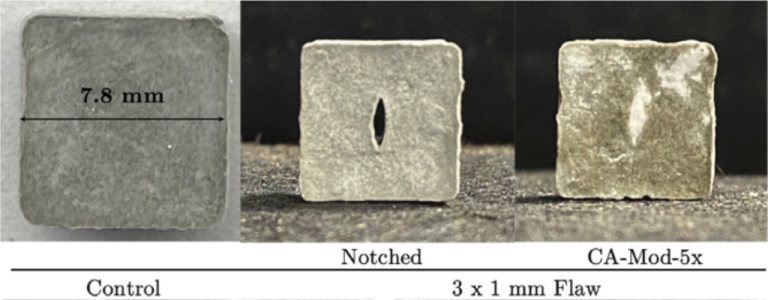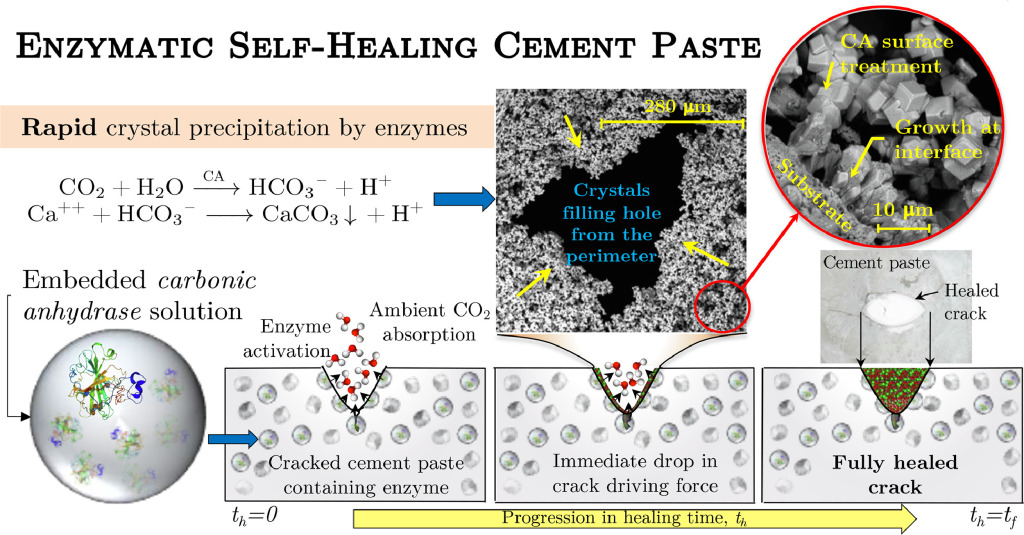Concrete is the most widely used material worldwide, responsible for 8% of global carbon emissions. It is inherently brittle and requires frequent repair or replacement, which is expensive and generates large volumes of CO2. Current repair methods using agents, such as mortar and epoxies, result in structures with reduced strength and resiliency owing to material mismatch. Therefore, self-healing cement paste (concrete’s main matrix) is required to overcome this problem.
The leading self-healing process is based on the use of bacteria and microbes, which are slow and have limited applications and unknown health effects. Inspired by the extremely efficient process of CO2 transfer in biological cells, this study introduces a method to develop a self-healing mechanism in a cementitious matrix using trace amounts of Carbonic Anhydrase (CA). CA catalyzes the reaction between Ca2+ ions and atmospheric CO2 to create calcium carbonate crystals with thermomechanical properties similar to those of cementitious matrices. The crystal growth rate using this method is orders of magnitude faster and more efficient than that of bacterial methods, resulting in the healing of large flaws on a timescale orders of magnitude shorter. This method can self-heal samples with millimeter-scale flaws within 24h and is significantly faster than all current methods that require a minimum of 28 days for the strength recovery of microscale cracks. This inexpensive method is biologically safe, consumes CO2, and avoids the use of unhealthy reagents. This could be an efficient mechanism for repairing and strengthening existing concrete structures.
Publications
- Shuai Wang, Suzanne Scarlata, Nima Rahbar “Curing and self-healing of enzymatic construction materials using nanoparticles,” Cell Reports Physical Sciences 2022, 3 (9), 101039.
- Shuai Wang, Suzanne Scarlat, Nima Rahbar “A Self-Healing Enzymatic Construction Material,” Matter, Volume 5, Issue 3, 957-974, 2022
- Jessica A Rosewitz, Shuai Wang, Suzanne F Scarlata, Nima Rahbar ”An enzymatic self-healing cementitious material,” Applied Materials Today, 2021, 23, 101035
- Nima Rahbar, “Extending the Life of Self-Healing Structural Materials,” Matter 2 (2), 289-291


